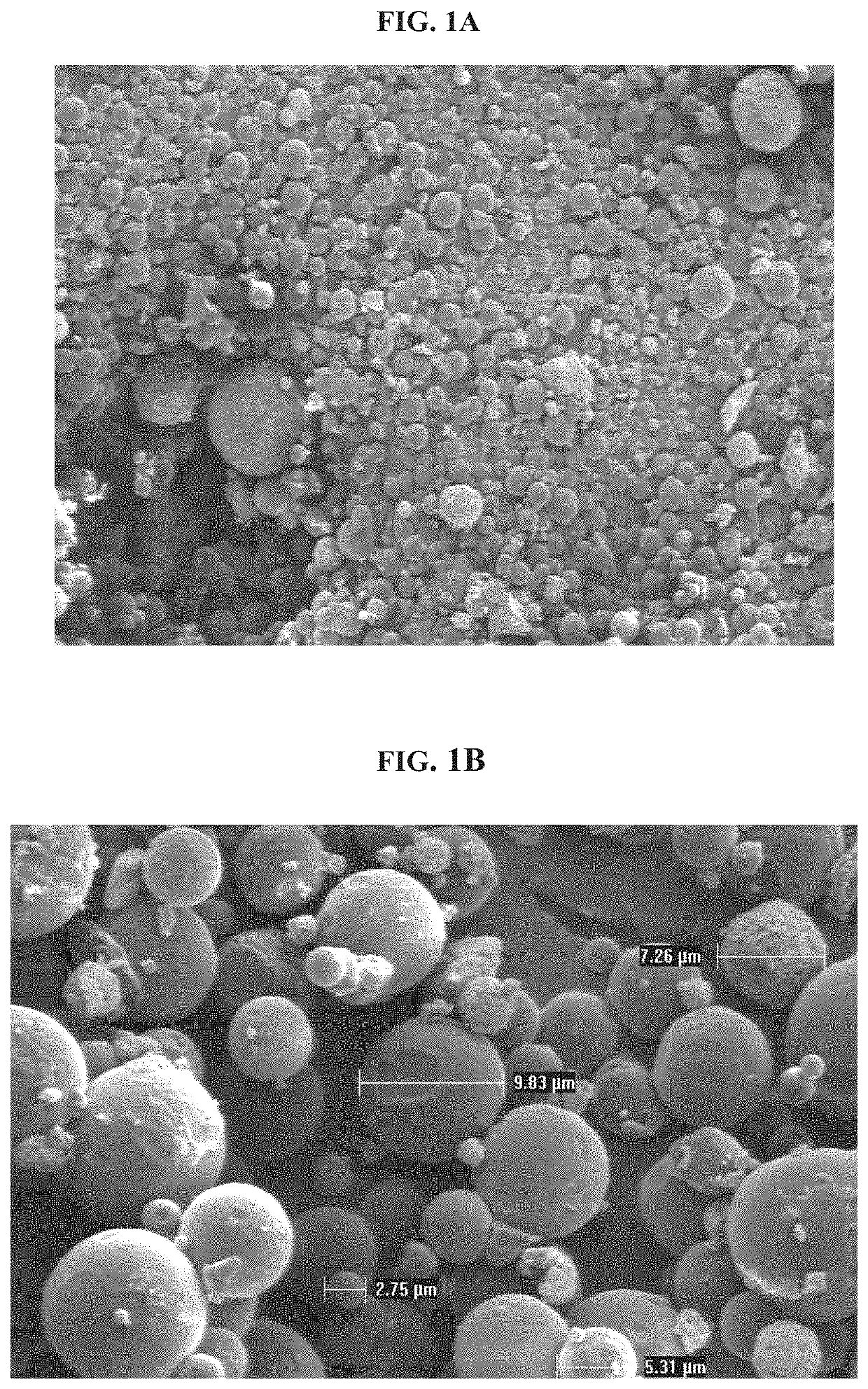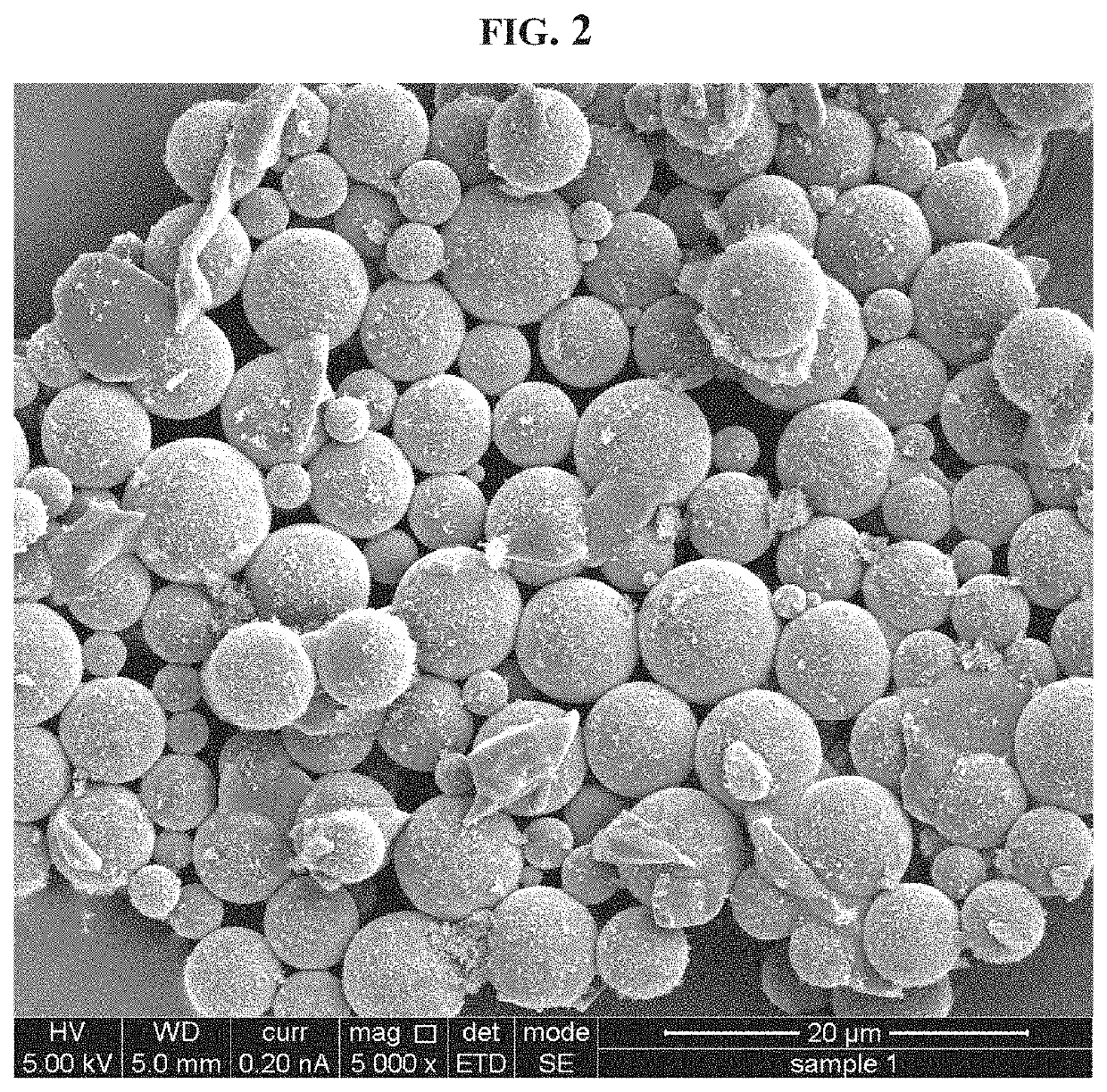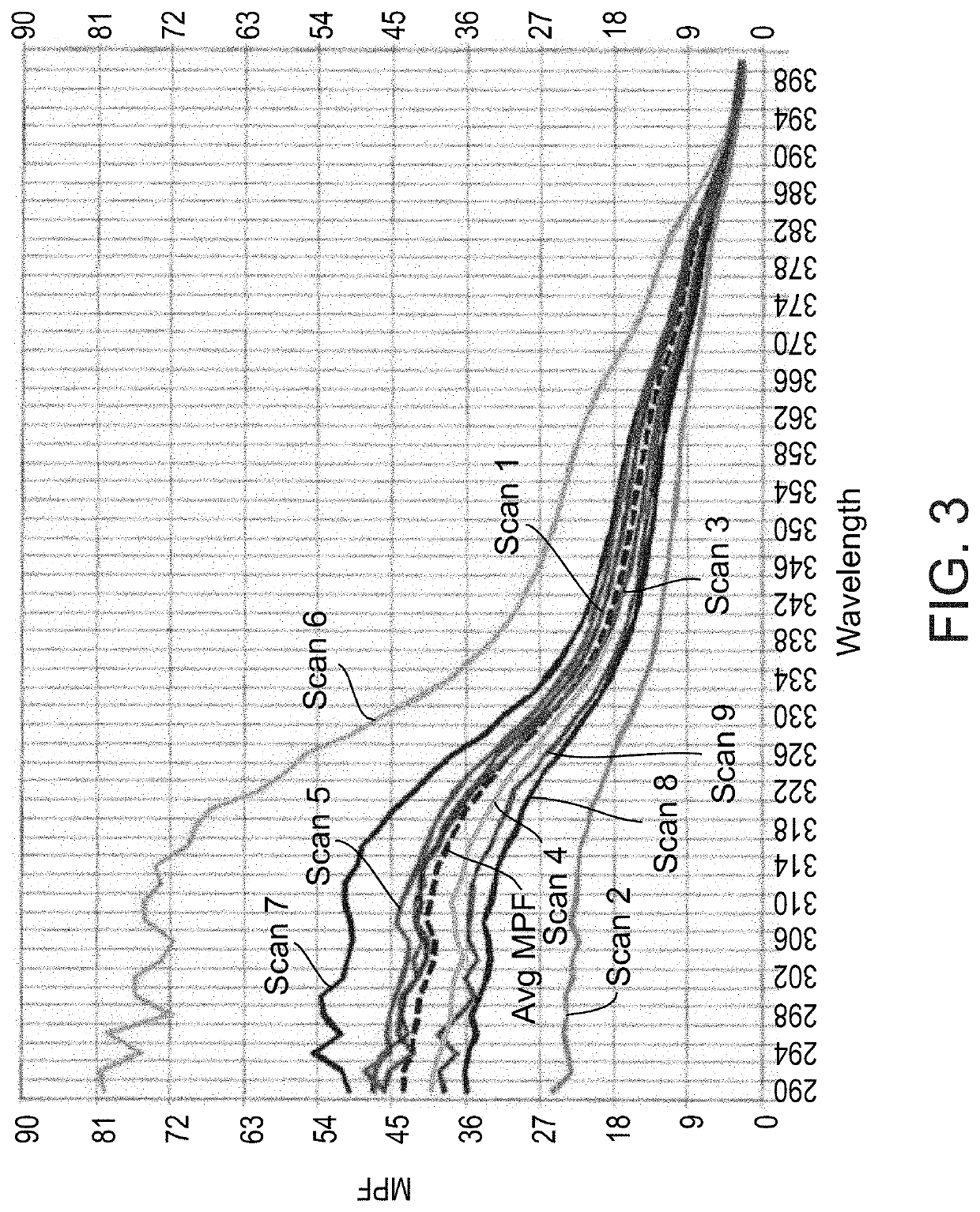Microcapsules comprising sunscreen agents
a technology of sunscreen agent and microcapsule, which is applied in the field of microcapsules, can solve the problems of in vivo evidence of nanoparticulate toxicity, damage applied therewith, grainy and occlusive qualities, etc., and achieve the effects of reducing hazardous effects, increasing sun protection factor, and eliminating cosmetic drawbacks related to the appearance of sunscreen formulation on the skin
- Summary
- Abstract
- Description
- Claims
- Application Information
AI Technical Summary
Benefits of technology
Problems solved by technology
Method used
Image
Examples
example 1
Preparation of Microcapsules Containing TiO2
[0242]1.1 Preparation of Organic Phase / Master Batch (MB) Stage
[0243]An organic phase (herein referred to interchangeably as “master batch” (MB)) was prepared by gradually adding 20 grams of the wall-forming polymer poly(methyl methacrylate) (PMMA) under stirring (5 minutes), into 233.3 grams of ethyl acetate, heating to 50° C. and stirring well until the mixture was homogeneous and transparent (about 20 minutes). The obtained polymer solution was cooled to 25° C. TiO2 was added to the solution under stirring for about 5 minutes and then the mixture was homogenized for about 8 minutes. The components of the MB are presented in Table 1.
TABLE 1Master batch constituentsLoading for Material100 grams MB1PMMA (average MW ca. 15,000; Sigma-20Aldrich ®, IL)2TiO2 (UV-TITAN M262, Sachtleben, Germany)803Ethyl acetate (Sciencelab[[.]](dot)com, Inc.,233.3USA)
[0244]1.2 Preparation of the Emulsion
[0245]An aqueous solution of 0.4% polyvinyl alcohol (PVA) ...
example 2
Preparation of Microcapsules Containing Avobenzone
[0252]2.1 Preparation of Master Batch (MB)
[0253]A master batch was prepared under light protection conditions by gradually adding 50 grams of the wall-forming polymer PMMA, under stirring (5 minutes), into 300 grams of ethyl acetate in a vessel, heating to 50° C. and dissolving PMMA under stirring (about 20 minutes) to a homogeneous and transparent solution. The polymer solution was than cooled to 25° C., and octocrylene (10 grams) was added to the polymer solution under stirring for about 3 minutes. 1-(4-methoxyphenyl)-3-(4-tert-butylphenyl)propane-1,3-dione (avobenzone; 40 grams) was then added to the mixture under stirring for 5 minutes. The components of the MB are presented in Table 4.
TABLE 4MB constituentsLoading component of MBMaterial(grams)-(for 100 grams)1PMMA502Octocrylene (UNIPROMA,10China)3Avobenzone (Neo Heliopan ® 357,4095% 4Ethyl Acetate300
[0254]2.2 Preparation of the Emulsion
[0255]An aqueous solution was prepared by ...
example 3
Preparation of Body Lotion Sunscreen Formulation
[0258]Body lotion sunscreen formulations comprising sunscreens-containing microcapsules of some embodiments of the present invention and the ingredients listed in Table 7 below were prepared by combining 4 phases prepared separately, as follows:
[0259]Phase 1 was obtained by mixing altogether the ingredients listed in Table 7 and heating to 70° C.
[0260]Phase 2, the stabilizing gel was prepared by mixing glycerin into water, followed by slow addition of the gelling-emulsifying agent Ecogel™ in order to increase viscosity and avoid clumping. The mixture was heated to 70° C. under mixing, and further mixed whilst maintaining this temperature for additional 20 minutes.
[0261]Phase 3, the sunscreen agent dispersion, was prepared by adding sunscreen agent-containing microcapsules according to some embodiments of the present invention, for example, microcapsules containing TiO2, to the dispersing agent Crodasperse™ (particularly useful for inor...
PUM
| Property | Measurement | Unit |
|---|---|---|
| size | aaaaa | aaaaa |
| size | aaaaa | aaaaa |
| particle size | aaaaa | aaaaa |
Abstract
Description
Claims
Application Information
 Login to View More
Login to View More - R&D
- Intellectual Property
- Life Sciences
- Materials
- Tech Scout
- Unparalleled Data Quality
- Higher Quality Content
- 60% Fewer Hallucinations
Browse by: Latest US Patents, China's latest patents, Technical Efficacy Thesaurus, Application Domain, Technology Topic, Popular Technical Reports.
© 2025 PatSnap. All rights reserved.Legal|Privacy policy|Modern Slavery Act Transparency Statement|Sitemap|About US| Contact US: help@patsnap.com



